Routing the Body Cavities
Using plenty of masking tape, we laid out the location of the body routs for the pickup and controls. We used a piece of the fretboard stock to make the riser for the bridge and tail piece, so they would match the height of the nut, once it was mounted to the fretboard. Here we are double checking that the bridge would be located in a proper location to match the 23-1/2" scale.
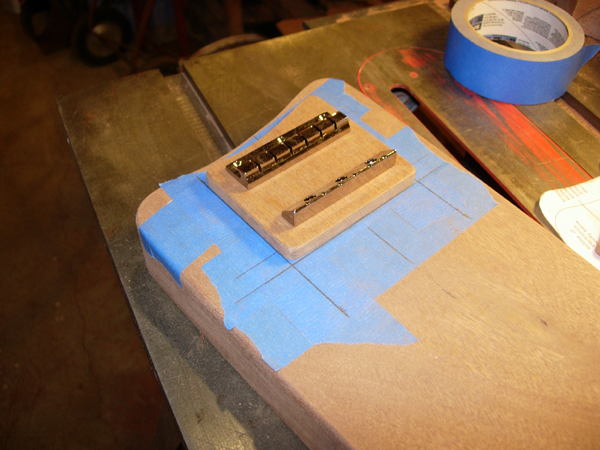
Locating the bridge riser
Based on that, and the location of the end of the fretboard, we then drew in the lines for the pickup and control cavity. As you can see here, we have already drilled the hole for the output jack, lining it up so it enters the cavity between the volume and tone controls (see pictures below for this).
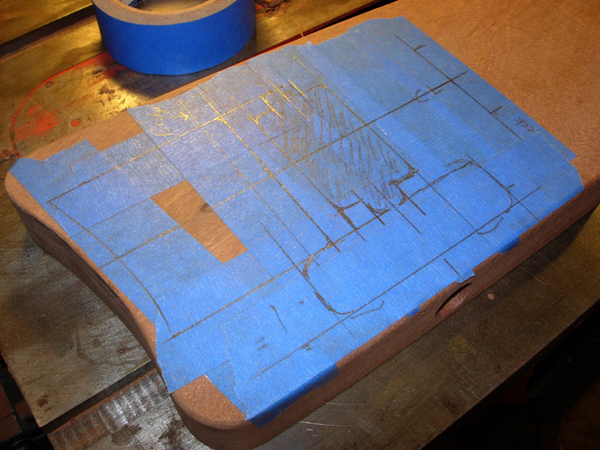
Laying out the body cavity
Below, you can see a better view of the output jack hole. Again, we used a nice forester bit for this, which makes a nice clean hole. We drilled this before routing out the body cavity, so as to prevent any blowouts during the drilling of the output jack hole.
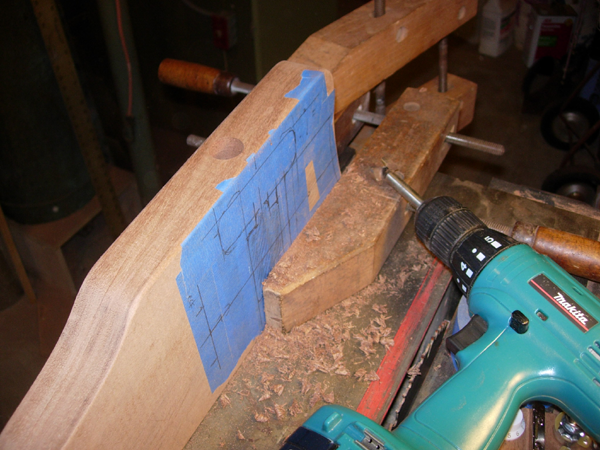
Drilling the output jack hole
Another mock up to prevent the "cut it 3 times and it was still too short!" syndrome...
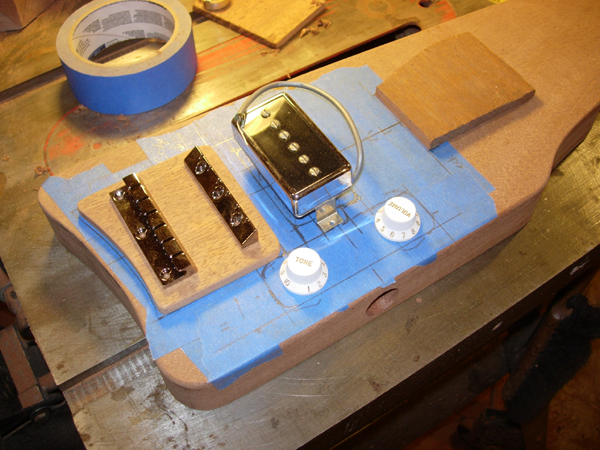
Another mock up!
Now if we were planning to make a bunch of these, we would consider making some templates, and using a router, but for these, we just used a Forester bit in the drill press for the routes. We set the drill press with a stop for the correct depth, which makes this work well, without worrying about drilling too deeply. The scalloped peaks between drill passes can be cleaned up with a chisel if desired, but, of course, all of this gets covered up with the pickguard anyway, so as long as everything had clearance, we were set.
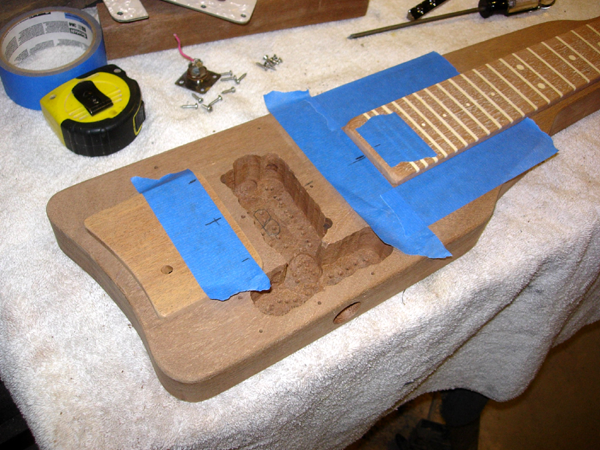
Routing the body using the drill press
At this point, we are ready for the pickguard.


